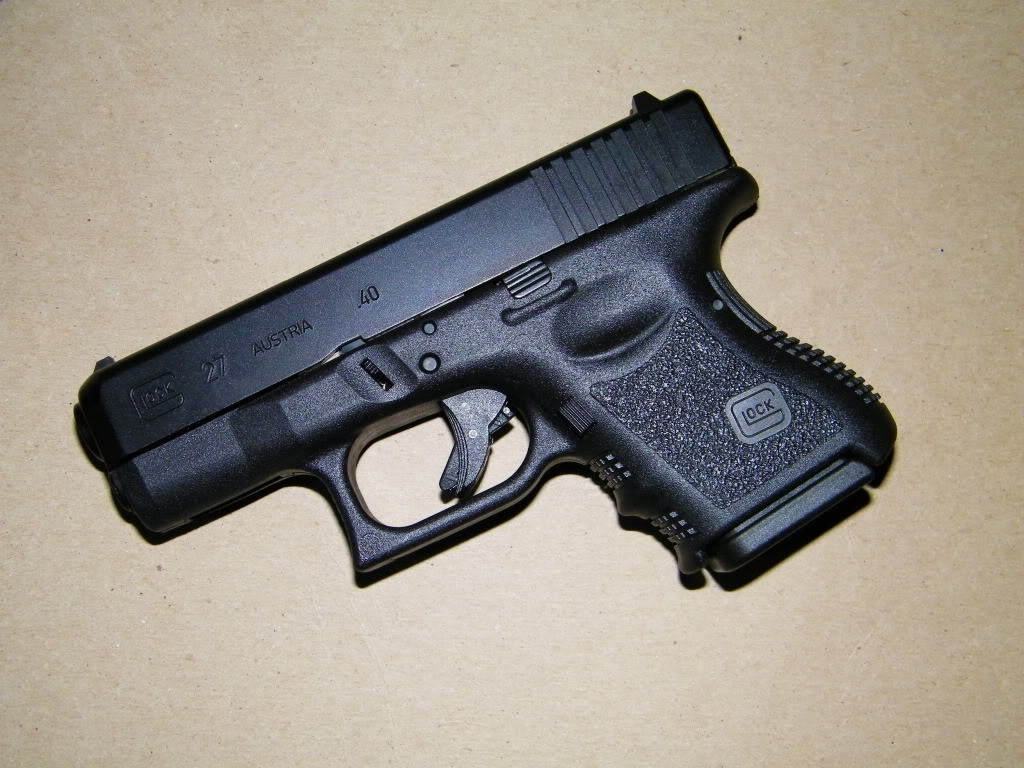
Above is my Glock 27. It’s my primary carry firearm.
I have never had such a problem picking something out as I did while trying to find the perfect carry firearm. It was an overload of awesomeness handling all of the different ones at my local gun shop and trying to determine which one would be the perfect one that would sit around 4-5 o’clock 16 hours of each day.
So, with all of the selection out there, what’s the best way to choose the right firearm for you? There is a solution, more of an equation, to making this determination. It starts with your level of experience.
Consideration #1
Firearm Experience
If you are anything like me, you may have been relatively new to firearms around the same time you decided that you wanted to carry a firearm. This is very typical and needs to be considered while choosing a firearm. If you’re brand new to firearms, a larger caliber may not be the best start. Rather, a caliber with a more manageable recoil (to allow for better follow-up shots) should be considered such as a 380ACP or 9mm. Once you prove to yourself that you are adequately proficient with a smaller caliber, you can then move up the ladder to, say 40 S&W, if that’s your end goal of a caliber to carry.
The most important thing to always remember is this; the ‘best caliber‘ debate doesn’t actually exist. The best caliber is the one that you can shoot effectively and efficiently. It doesn’t get anymore complicated than that.
So, if you’re a novice, try sticking with a smaller caliber out of the gate. Then, move up from there after things feel like 2nd nature with the current firearm.
Consideration #2
Body Type
Carrying a full size 1911 is out of the question for me. I’m a small guy, and it would stick out like a sore thumb unless I was wearing a winter jacket. It’s a little tough sometimes to determine how you’ll be able to conceal a certain firearm until you actually do it. A good way to find out would be to do some searches online to see what other people carry that may have similar body types to yourself.
I guess my point is, don’t carry something that’s too big for your body. Ask around at gun shops and do your research. Ask friends that carry to see if they have any recommendations as well.
If you’re a woman, you may quickly find out that you have a rather limited selection of what you can carry concealed on a typical day. There are many different avenues that you may choose to help maximize your conceal-ability.
Consideration #3
Reliability and Accuracy are key
When choosing that perfect pair to help keep you safe, you’ll want to check out the firearm’s reliability. For pretty much any firearm you can think of, you’ll find massive amounts of information from users online. Many of these ‘reviews’ are from users just like you that discuss their experiences in different forums. Search for the firearms that you are considering and see what others are saying. If you see a trend for a certain model, it’s probably a good idea to steer clear from it for carry.
As far as accuracy goes, this applies to both the firearm and yourself. Going back to Consideration #1, you’ll need to make sure that you’re comfortable and proficient with the firearm (and that means you can shoot it on target).

